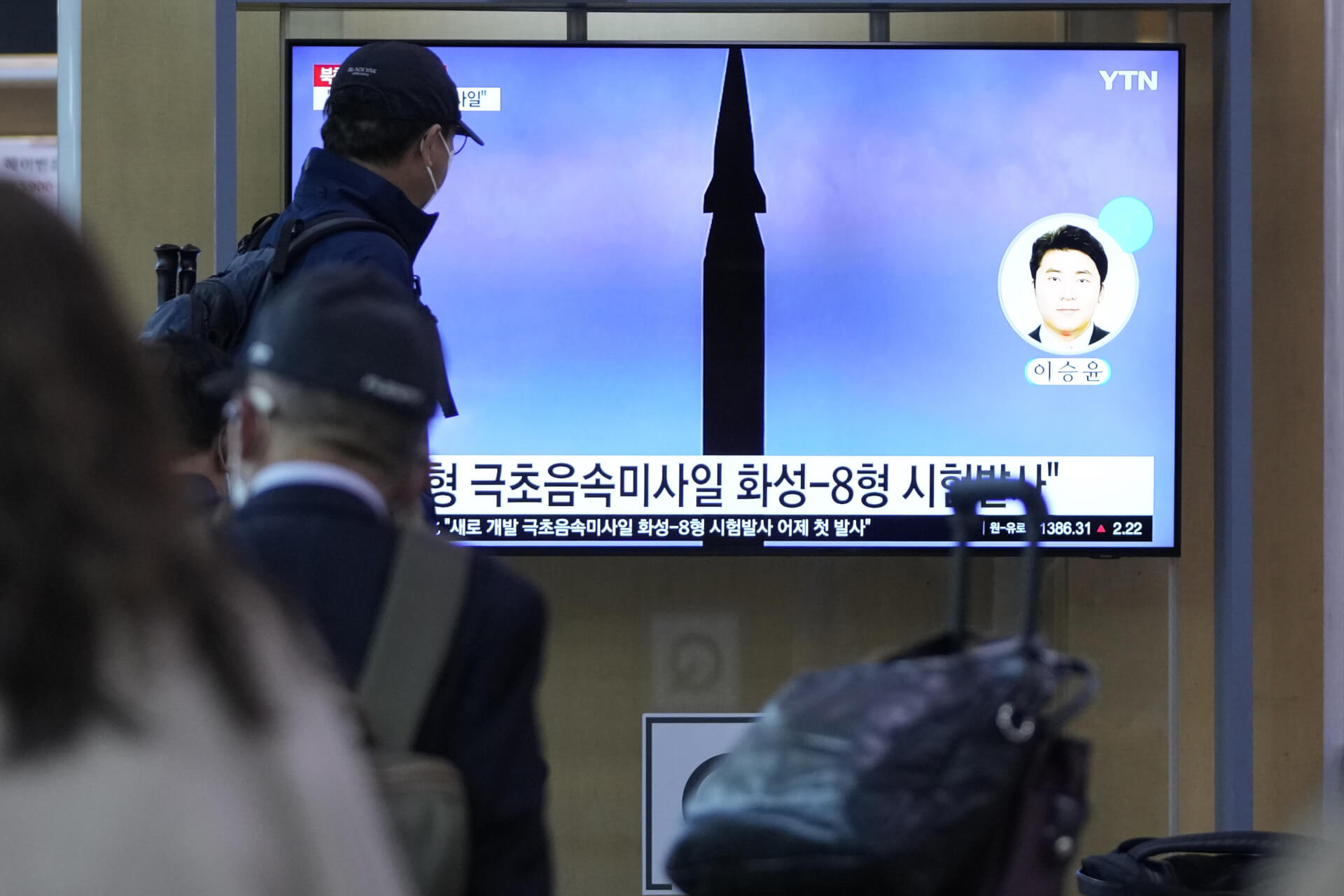North Korea reported on Wednesday that it had launched a hypersonic missile that successfully hit its target. Hypersonic weapons fly towards targets at lower altitudes and can achieve more than five times the speed of sound – or about 6,200 kilometres per hour.
Hailing the significance of the test, the Korean Central News Agency (KCNA) said that “The successive successful test launches in the hypersonic missile sector have a strategic significance of accelerating the task of modernizing the national strategic force suggested by the 8th Party Congress and completing the most important task among the top five tasks in the strategic weapons sector of the five-year plan.”
The North Korean news agency further reported that the “hypersonic gliding warhead” was separated after launch, manoeuvred 120 kilometres from the initial launch, and “precisely hit” the target set 700 kilometres away without an error. In addition, the test confirmed components such as flight control and ability to operate in the winter, and the ability to combine “multi-step glide jump flight and strong lateral manoeuvring,” the KCNA said.
The test was detected by Japan and South Korea. The Japanese Coast Guard said on Wednesday that the projectile fell into the sea off the eastern coast of the Korean Peninsula.
Looks like North Korea did indeed test the liquid-fueled MaRV ballistic missile first seen at the Self Defense Expo in October 2021. https://t.co/Yri8zQticw pic.twitter.com/Xf3MP2bkt6
— Ankit Panda (@nktpnd) January 5, 2022
Shortly after, South Korea’s National Security Council expressed concern over the missile launch, which it presumed to be a ballistic missile. Seoul also called for the resumption of the denuclearisation dialogue in order to ease the tension in inter-Korean relations. Furthermore, South Korea’s Unification Ministry urged Pyongyang to respond to its efforts to reach peace and cooperation through dialogue.
The launch is Pyongyang’s first such test since October and the second of a hypersonic missile. Last September, North Korea announced that it had tested a new hypersonic missile, Hawasong-8, from Toyang-ri, Ryongrim County in the Jagang province. This makes North Korea part of a select group of countries, including the United States and China, to attempt developing hypersonic missiles.
Photos of the missile tested on Wednesday show what analysts call a liquid-fueled ballistic missile with a conical-shaped Manoeuvrable Reentry Vehicle (MaRV) that blasts off from a wheeled launch vehicle. It is a different version than the Hawasong-8 and was first unveiled at a defence exhibition in Pyongyang in October.
The test comes after Supreme Leader Kim Jong Un had said in his New Year’s speech that his country would continue to strengthen its defence capabilities due to an increasingly uncertain military environment on the Korean peninsula.
A US State Department spokesperson condemned the launch, asserting that it had violated multiple United Nations Security Council resolutions and poses a threat to regional neighbours. Washington also renewed its call for dialogue with Pyongyang. In fact, last month, the US and South Korea agreed on a draft to formally end the Korean war. The US also called on North Korea to consider the “outreach” and said that it is willing to reach out to Pyongyang.

